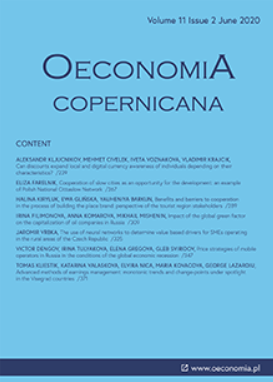COVID-19 and digital deprivation in Poland
COVID-19 and digital deprivation in Poland
Author(s): Marta Kuc-CzarneckaSubject(s): Methodology and research technology, Health and medicine and law, ICT Information and Communications Technologies
Published by: Instytut Badań Gospodarczych
Keywords: COVID-19; digital deprivation; e-exclusion; GIS methods;
Summary/Abstract: Research background: The problem of digital deprivation is already known, but the COVID-19 pandemic has highlighted its negative consequences. A global change in the way of life, work and socialisation resulting from the epidemic has indicated that a basic level of digital integration is becoming necessary. During the lockdown, people were forced to use ICTs to adapt to a rapidly changing reality. Current experience with coronavirus pandemic shows that the transition to these extraordinary circumstances is not smooth. The inability to rapid conversion to the online world (due to a lack of skills or technical capabilities) significantly reduces professional mobility, hinders access to public services, and in the case of children, exposes them to the risk of remaining outside the remote education system. Purpose of the article: This research paper is addressing new issues of the impact of the COVID-19 pandemic on deepening and increasing the severity of e-exclusion. The goal of the paper is to indicate territorial areas in Poland which are particularly vulnerable to digital deprivation due to infrastructural deficiencies. Methods: Raster data regarding landform, combined with vector data regarding population density and type of buildings as well as the location of BTS stations are used in so-called modeling overland paths (GIS method) to indicate areas vulnerable to the infrastructural digital divide. Findings & Value added: The research showed that 4% of Poles remain out-side the Internet coverage, and additional ten percent of them are out of the reach of the Internet, allowing efficient remote work or learning. The research indicated that digital 'accessibility gap' is underestimated. E-exclusion has become a pressing issue and requires urgent system solutions, in case of future lockdowns.
Journal: Oeconomia Copernicana
- Issue Year: 11/2020
- Issue No: 3
- Page Range: 415-431
- Page Count: 17
- Language: English

